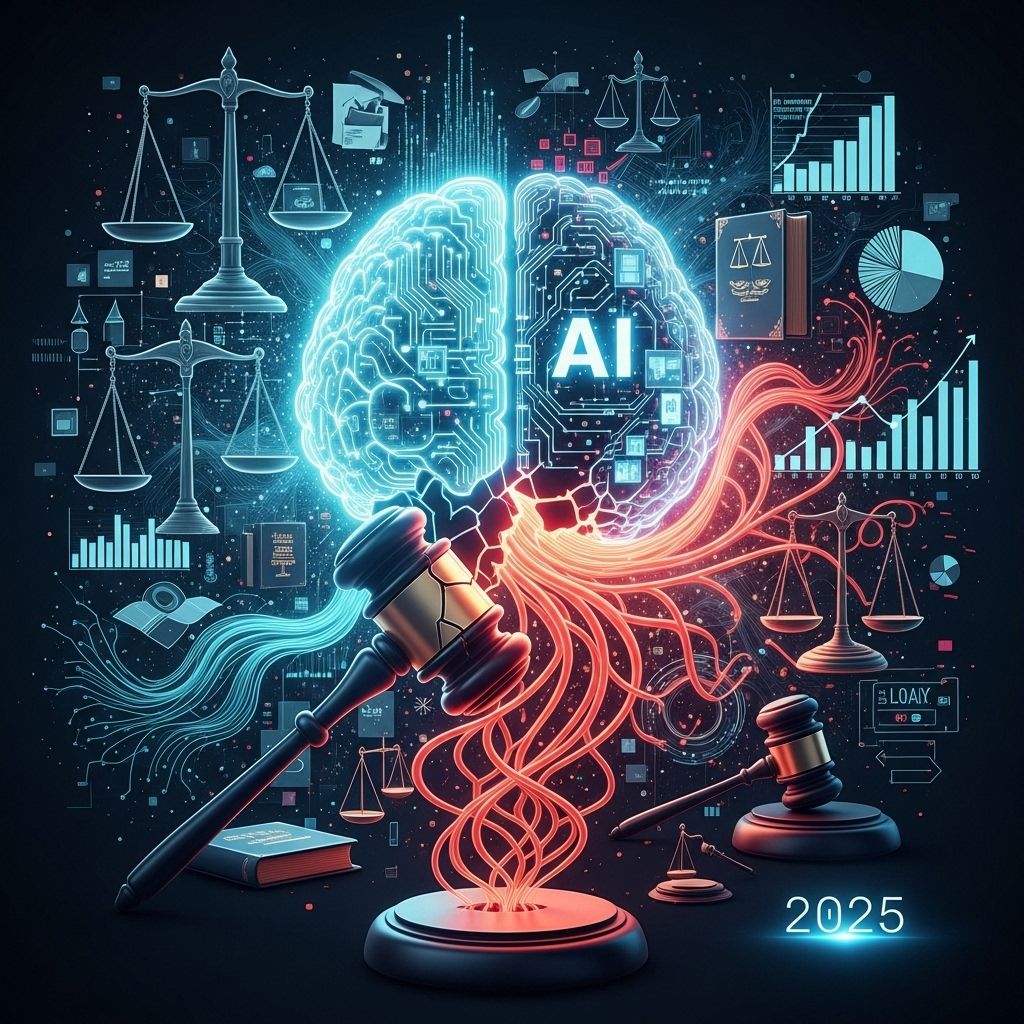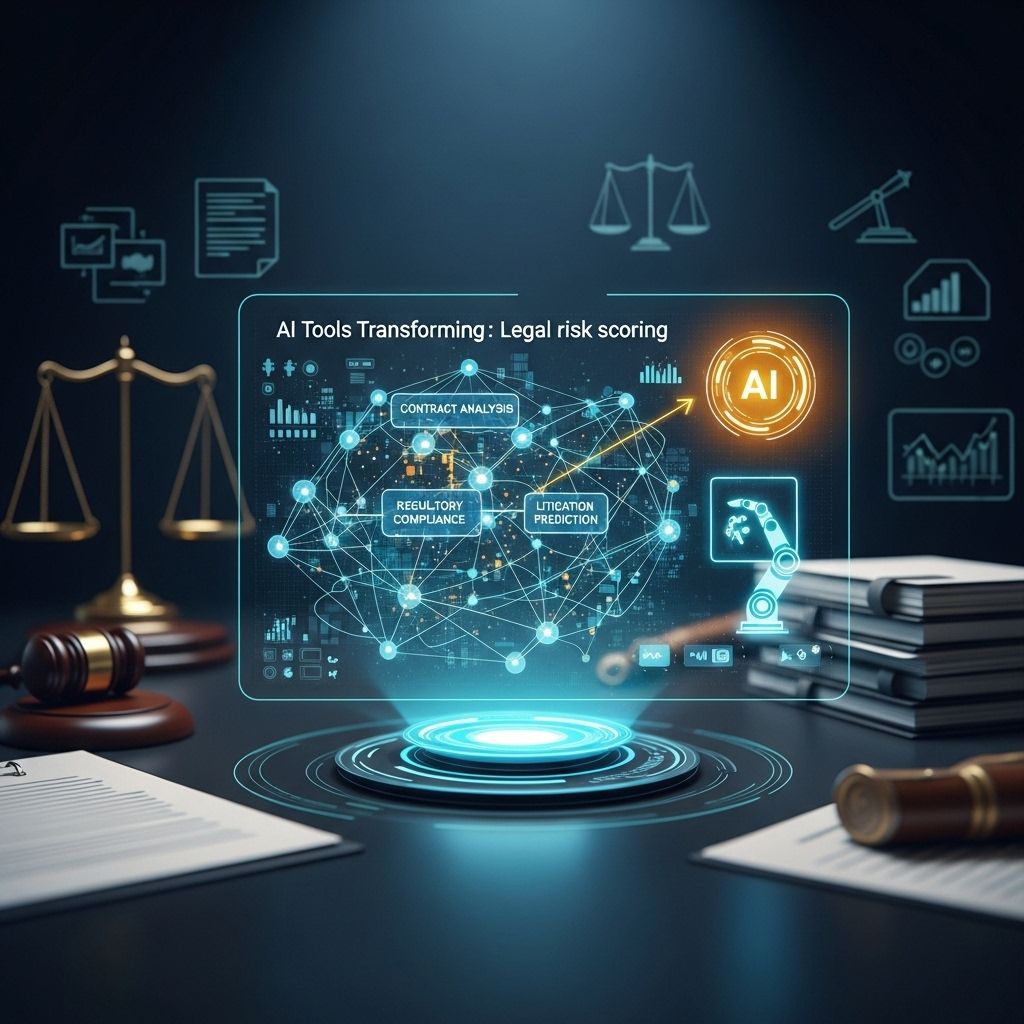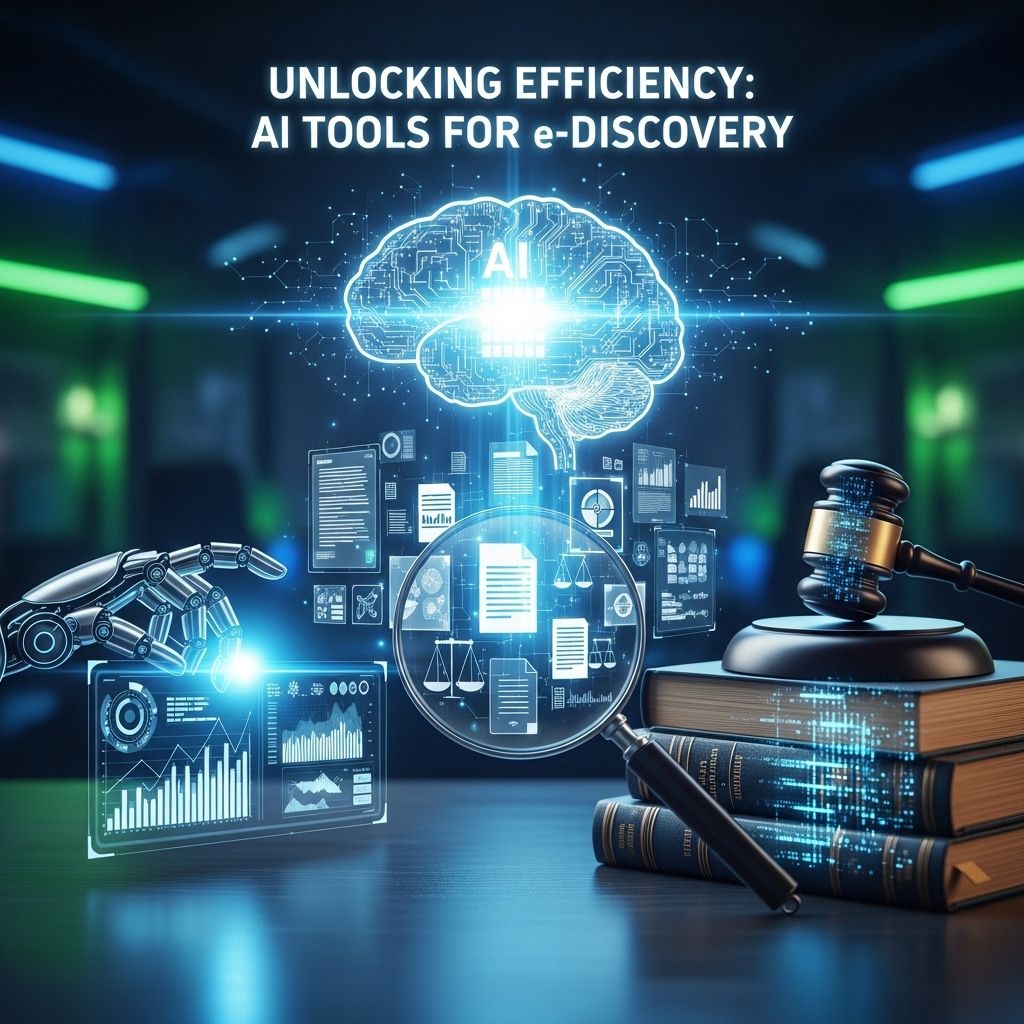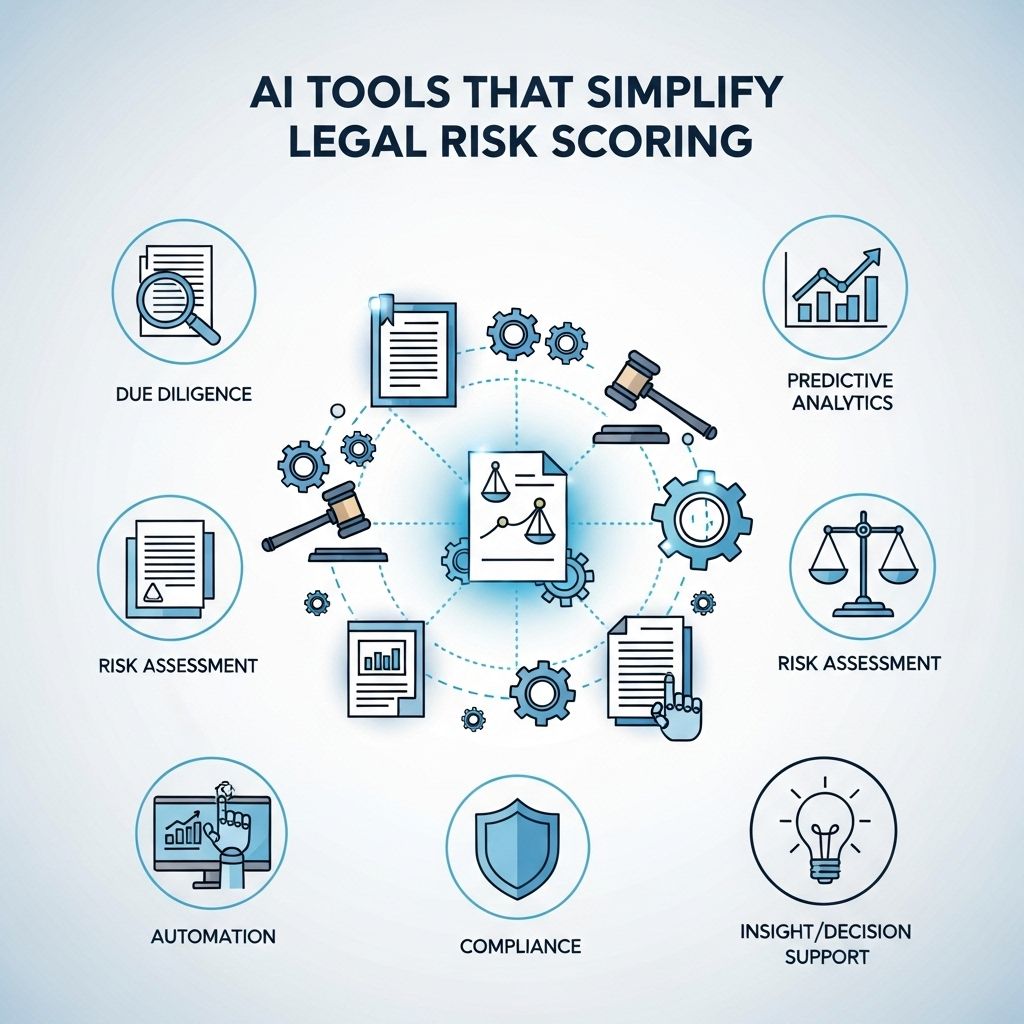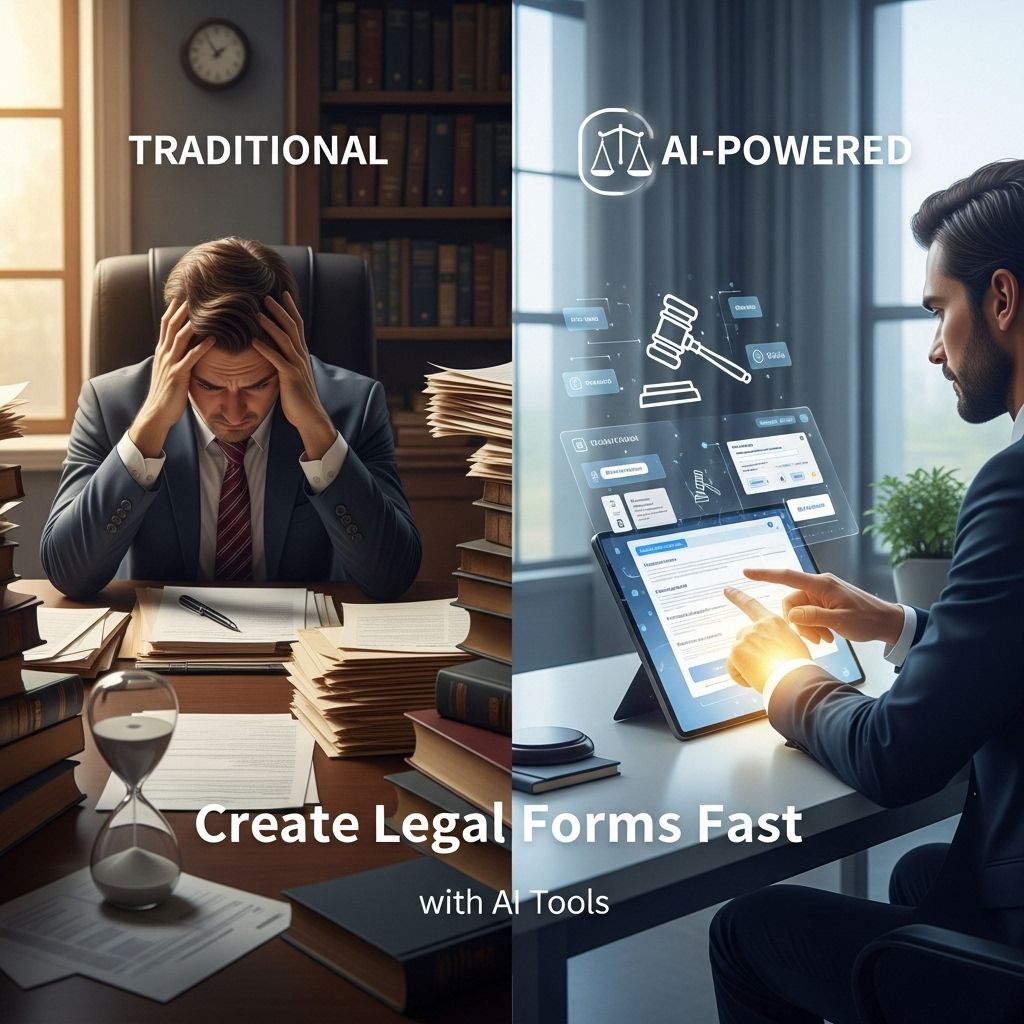Elevate Your Legal Risk Scoring with AI
Discover how AI can transform your legal risk scoring process, enhancing accuracy and efficiency in risk assessment.

In today’s fast-paced legal environment, the ability to assess and manage risk effectively is more crucial than ever. Legal professionals are constantly seeking innovative solutions to streamline their operations, enhance accuracy, and ultimately make informed decisions. One of the most promising advancements in this regard is the integration of Artificial Intelligence (AI) into legal risk scoring. This technology not only optimizes risk assessment but also empowers legal teams to stay ahead of potential issues before they escalate.
Table of Contents
Understanding Legal Risk Scoring
Legal risk scoring is a systematic approach to identifying, analyzing, and quantifying risks associated with legal obligations and regulatory compliance. By assigning scores to various risks, legal teams can prioritize their responses and allocate resources effectively. The traditional methods of risk assessment often involve manual processes that are time-consuming and prone to human error. However, AI has the potential to revolutionize this process.
Key Components of Legal Risk Scoring
- Data Collection: Gathering data from diverse sources such as contracts, regulations, and past litigation.
- Risk Identification: Analyzing data to identify potential risks including compliance lapses, contract breaches, and litigation exposure.
- Scoring Systems: Utilizing algorithms to assign scores based on the severity and likelihood of identified risks.
How AI Enhances Legal Risk Scoring
AI technologies like machine learning and natural language processing can significantly enhance the accuracy and efficiency of legal risk scoring. Here are some ways AI contributes:
- Automated Data Analysis: AI can process vast amounts of data quickly, identifying patterns and anomalies that may not be apparent to human reviewers.
- Predictive Analytics: By analyzing historical data, AI can predict future risks, enabling legal teams to take proactive measures.
- Real-time Updates: AI systems can monitor changes in regulations and legal landscapes, providing updated risk assessments in real time.
Implementing AI in Legal Risk Scoring
Integrating AI into existing legal risk scoring processes requires careful planning and execution. Here’s a step-by-step guide for legal teams looking to adopt this technology:
1. Assess Current Processes
Before implementing AI, it is essential to understand your current risk assessment processes. Evaluate:
- The sources of data currently utilized
- The methods used for risk scoring
- The challenges faced in risk management
2. Identify AI Solutions
Explore various AI solutions that can complement existing processes. Consider:
| Solution | Features | Benefits |
|---|---|---|
| Contract Analysis Tools | Automated interpretation of contract language | Increases accuracy and reduces time spent on manual reviews |
| Predictive Risk Models | Utilizes historical data to forecast risks | Facilitates proactive risk management |
| Real-time Compliance Monitoring | Tracks regulatory changes | Ensures up-to-date compliance efforts |
3. Train Your Team
To maximize the benefits of AI, it is crucial that the legal team is trained in using new tools and technologies. Consider:
- Workshops and training sessions on AI tools
- Best practices for data input and analysis
- Continuous learning opportunities on emerging legal technologies
4. Pilot Testing
Before a full-scale implementation, conduct pilot tests to assess the effectiveness of the AI solutions. Monitor:
- Accuracy of risk scores produced
- User feedback regarding the tool’s usability
- Impact on overall risk management processes
5. Full Implementation and Iteration
Once pilot testing is complete and adjustments are made, proceed with full implementation. Continuously evaluate:
- The performance of AI solutions
- The evolving needs of the legal team
- Updates in technology and regulatory requirements
Benefits of AI-Enhanced Legal Risk Scoring
The integration of AI into legal risk scoring processes offers numerous benefits, including:
Increased Efficiency
AI’s ability to automate data analysis and risk scoring reduces the time legal teams spend on manual processes. This allows them to focus on higher-value tasks such as strategic decision-making and client advisement.
Improved Accuracy
AI algorithms are designed to analyze vast amounts of data with precision, reducing the risk of human error in risk assessments. This leads to more reliable risk scores and informed decisions.
Proactive Risk Management
With predictive analytics, legal teams can identify potential risks before they manifest, allowing for timely interventions and significantly reducing the likelihood of adverse outcomes.
Challenges to Consider
While the advantages are substantial, it is important to acknowledge potential challenges when integrating AI into legal risk scoring:
- Data Quality: The effectiveness of AI tools is highly dependent on the quality of data input. Inaccurate or incomplete data can lead to faulty risk scores.
- Change Management: Transitioning to an AI-driven approach may meet resistance from team members accustomed to traditional methods.
- Compliance and Ethical Considerations: Legal teams must ensure that AI tools comply with regulations and ethical guidelines pertaining to data usage.
Future Trends in AI and Legal Risk Scoring
As technology continues to evolve, several trends are expected to shape the future of AI in legal risk scoring:
1. Enhanced Natural Language Processing
Improvements in NLP will allow AI tools to understand and interpret legal language more effectively, leading to better contract analysis and risk identification.
2. Greater Integration with Other Technologies
AI tools will increasingly integrate with other technologies such as blockchain for smart contracts, further enhancing the legal risk assessment process.
3. Evolving Ethical Standards
The legal profession will continue to develop standards and guidelines for the ethical use of AI in legal processes, ensuring that AI is used responsibly and transparently.
Conclusion
Integrating AI into legal risk scoring presents a transformative opportunity for legal professionals to enhance their risk management processes. By leveraging AI’s capabilities for data analysis, predictive modeling, and real-time updates, legal teams can not only improve efficiency and accuracy but also stay ahead of potential risks. As the legal landscape evolves, embracing these technologies will be essential for maintaining a competitive edge in a complex and dynamic environment.
FAQ
What is legal risk scoring?
Legal risk scoring is a method used to quantify the potential legal risks associated with business operations, helping organizations make informed decisions.
How can AI improve legal risk scoring?
AI enhances legal risk scoring by analyzing vast amounts of data, identifying patterns, and providing predictive insights that traditional methods may overlook.
What are the benefits of using AI for legal risk assessment?
The benefits include increased accuracy, faster analysis, cost savings, and the ability to proactively manage legal risks before they escalate.
Is AI legal risk scoring suitable for all businesses?
Yes, AI legal risk scoring can be tailored to fit businesses of any size and industry, making it a versatile tool for legal risk management.
How does AI handle data privacy in legal risk scoring?
AI systems are designed to comply with data privacy regulations, ensuring that sensitive information is protected while still providing valuable insights.
What should I consider when implementing AI for legal risk scoring?
Consider factors such as data quality, integration with existing systems, user training, and ongoing monitoring to ensure successful implementation.

